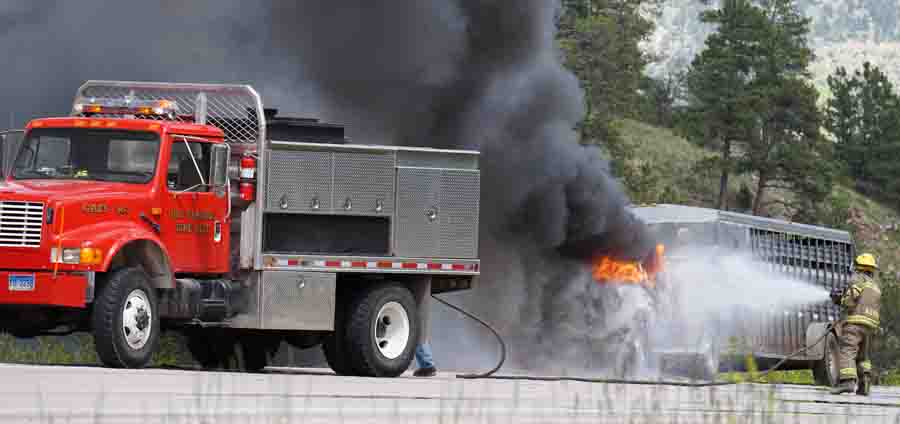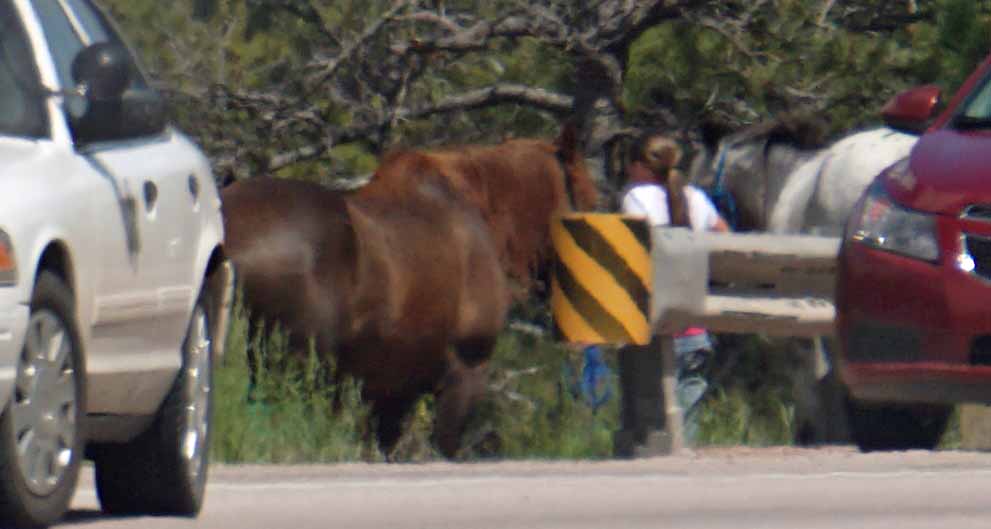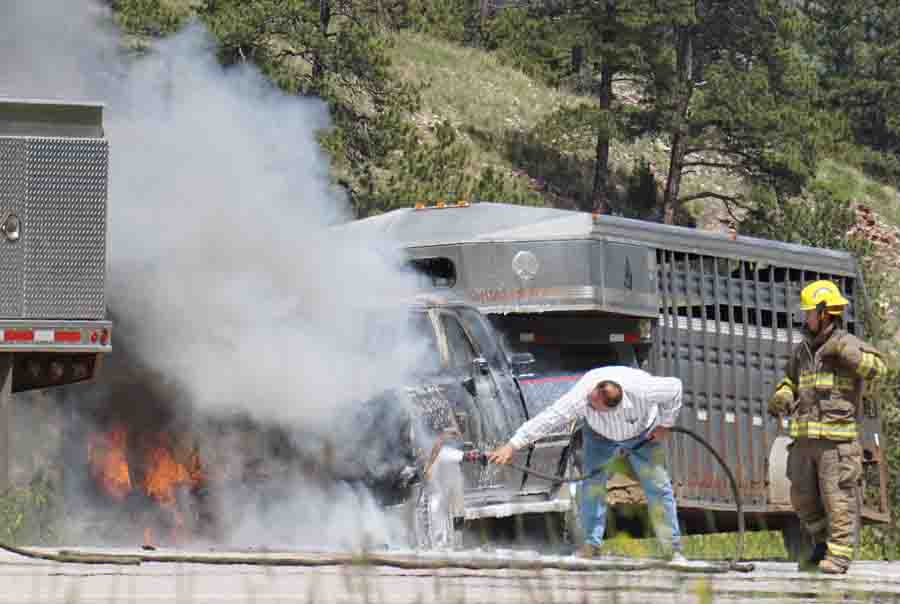
Today a pickup truck pulling a horse trailer caught fire while ascending a steep grade on Highway 18 a couple of miles west of Hot Springs, South Dakota. When it started I was all set to go out to Wind Cave National Park to take some photos, but I diverted to the fire instead. The truck was fully involved and was a total loss before the fire department arrived. So there was no point in risking anything, to save what amounted to nothing, at least where the pickup truck was concerned. I don’t believe there was much, if any damage to the horse trailer.


While the firefighter with the turnout gear and hard hat was applying water on the driver’s side with what looked like a one-inch line (I could be wrong on the size), the left-front tire popped about eight feet away. He backed off, and while he collected himself, the gentleman in the long sleeve shirt, sneakers, and jeans took over the nozzle.

While we appreciate what our volunteer firefighters do, providing an invaluable service to the community with no salary, we would appreciate them even more if they took the time to put on personal protective equipment and breathing apparatus, and then select a 1-1/2″ line when attacking a vehicle fire — especially when a fully involved vehicle is already a total loss upon their arrival. Risk a lot to save a life. Risk nothing to save nothing. We want them all to return home safely after working a fire.



Vehicles have a number of components that can explode in a spectacular and dangerous manner when heated. Struts, shock absorbers, etc. They also produce some nasty fumes. It’s best to fully suit up with a SCBA and make a attack using a 1.5 or 1.75 inch line from a safe distance.
A training my VFD did a couple years back on vehicle fires, one point was emphasized repeatedly – if you arrive and see visible flames, the vehicle is already totaled. There is nothing to save except possibly exposures. In other words, a burning vehicle is not an emergency (unless the fire is spreading to vegetation or other property). Take the time to be in proper gear. Period. There is nothing worth getting a blister over, let alone anything worse.
Foolish! No other word for it. The picture should be forwarded to whomever has oversight authority for this fire department.
I thought that maybe he was driving the pickup, but if he got out of the engine, he was probably a firefighter in no PPE. Too bad, all too many times shortcuts are taken in the name of speed. I personally believe that out here in the Rural West, lights and sirens are dangerous.
Yes, a 1.5 or 1.75 flowing foam will put out a car fire, so will straight water. In fact, with a little additive a 2.5 gallon “can” will too. I have used .75 booster line off of an type 6 to put out vehicle fires. In my experience car fires look worse than they are, there really is not that much fuel in a vehicle, out in the sticks, extension to the surrounding vegetation is the main concern, which is why we will often times send a type 6 instead of the crash truck. Good discussion.
Back in the day in CDF, we were taught to best way to conserve water was to put the fire out now. And the best way to do that was generally an 1 1\2 line with the 100 GPM fog nozzle. Only mop-up got the 1 inch line. Sometimes the county engine boys would pull the 2 1/2 line for initial attack on brush fires but I thought that was just showing off.
I am not sure, but I think the person in street clothes operating the nozzle was a volunteer firefighter.
Have I put out vehicle fires with a booster line? Yes! Do I recommend it, not necessarily. Seems there are other issues brought up here that are in need of more attention. But, once again,,,,, we got away with it. Next time? Maybe not. GPM’s match BTU’s! Pull your 1 1/2″ and get your PPE on, Son!
I am glad you said it Bill. The days of attacking a vehicle fire with a 1″ booster line are long gone.
Burn care is the most expensive medical care there is.
I completely agree Bill. Safety is number one priority on the scene and that includes wearing all proper PPE and using the proper equipment!
Lets see …
Cost of Structural PPE = $1500
Cost of Ambulance ride & Emergency Room Visit = $2500+, and then there is all the trips to the doctor for follow-up care (and have the stitches removed)… not to mention all the negative publicity for the Fire Department.
I think I’ll keep wearing my turnouts.
I can’t agree with you more Bill. Being a member of this department it always sickens me to see my guys not using the proper equipment or Engines, that we most certainly have for different types of emergencies.
Good call Bill. It took us years to move to that point, and for a particular individual, it took him retiring. He never did want to make the change.